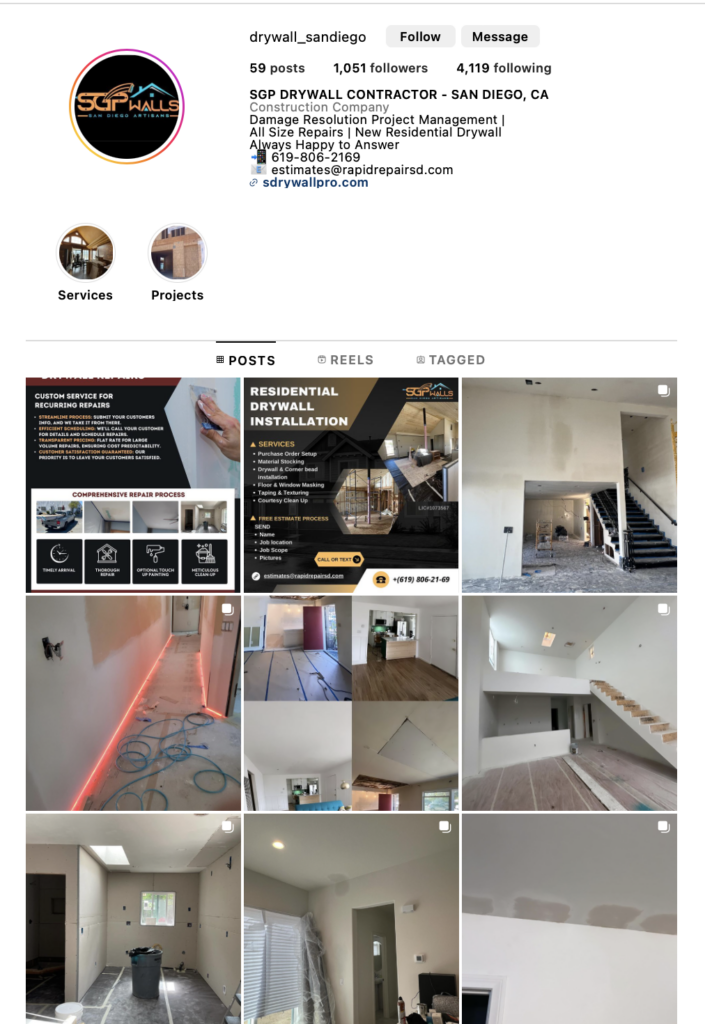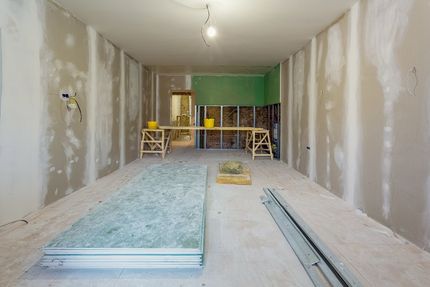Efficient Drywall Repair Techniques to Restore Your Wall surfaces
Efficient Drywall Repair Techniques to Restore Your Wall surfaces
Blog Article
Drywall Setup Made Easy: Tips for Perfect Results
Drywall setup is frequently regarded as an overwhelming task, yet with the right technique and knowledge, it can come to be a manageable undertaking. Grasping strategies for cutting, hanging, and ending up drywall can considerably influence the result.
Picking the Right Materials
Picking the suitable products for drywall installation is vital to achieving a long lasting and aesthetically pleasing surface. drywall installation. The main component, drywall sheets, usually can be found in various densities, with 1/2-inch sheets being basic for indoor wall surfaces. For areas needing added moisture resistance, such as kitchens or shower rooms, take into consideration using eco-friendly board or concrete board, which are particularly designed to hold up against humidity

Additionally, choosing the appropriate fasteners-- either screws or nails-- is crucial for securing the drywall to the framing. Drywall screws are usually preferred for their holding power and lowered threat of standing out. Think about the finishing touches such as primer and paint, which not only enhance the look yet additionally secure the drywall from wetness and wear.
Preparing the Installation Area
Before starting the drywall installation procedure, it is vital to prepare the installation area thoroughly. A clean workspace lessens the risk of damages to existing items and enables for efficient motion throughout setup.
Following, examine the wall surfaces and ceiling for any flaws, such as cracks, holes, or mold and mildew. Address these issues in advance; spot any type of damages and permit sufficient time for repairs to dry. In addition, ensure that electrical outlets, buttons, and plumbing are appropriately placed and made up, as this will impact drywall positioning.
Take into consideration the environmental conditions too. A stable temperature and humidity degree are essential for ideal adhesion and efficiency of the drywall materials. If needed, use a dehumidifier or heater to create suitable problems.
Cutting and Hanging Drywall
The key to efficient drywall setup hinges on the accurate cutting and hanging of the panels. Begin by gauging the room precisely, thinking about any kind of blockages such as electric outlets or windows. Use a straight side and an utility blade to score the drywall along your measurements, after that snap it along the scored line for a clean break. For more intricate cuts, such as around electrical outlets, a drywall saw can be used for accuracy.

Always function from the top down and delegated right, making certain that you preserve a staggered pattern to click resources improve security. Properly hanging the drywall sets the foundation for a smooth surface, eventually causing remarkable cause your drywall project.
Taping and Mudding Methods
While proper cutting and hanging of drywall establishes the stage, the next critical action includes grasping taping and mudding methods to make sure a smooth finish. Insulation is vital for enhancing joints and avoiding fractures; it involves embedding tape right into the applied joint substance (mud) Start with a top quality fiberglass like this or paper tape, using the tape over the joint and pressing it into the wet mud using a taping knife, ensuring no air bubbles continue to be.
When the tape is in place, use a slim layer of joint substance over the tape, feathering the sides to develop a smooth shift to the drywall surface. Permit this layer to dry completely before sanding it lightly to eliminate blemishes. Repeat this procedure, using added layers of mud as needed-- usually a couple of coats-- while slowly expanding the application location with each layer to attain a smooth appearance.
After the final coat dries out, sand the surface with a fine-grit sandpaper until smooth. sheetrock repair fort worth. Keep in mind to wear a mask throughout sanding to avoid inhaling dirt bits. Mastering these taping and mudding techniques is vital for achieving a professional-quality surface in your drywall installment
Ending Up Touches for Excellence
Achieving a remarkable drywall installation exceeds taping and mudding; it culminates in the completing touches that raise the overall look. These final steps are vital in making sure a professional-grade finish that enhances the appearances of your area.
Begin by fining sand the dried out joint substance to develop a smooth surface area. drywall installation. After fining sand, clean down the walls with a wet towel to remove any kind of dust bits, guaranteeing a tidy surface area for paint.
Following, apply a guide particularly created for drywall. This step is necessary, as it aids seal the joint substance and supplies an uniform base for the topcoat. As soon as the guide dries out, evaluate for any type of blemishes, and repair as required.
Verdict
Finally, effective drywall installation depends upon the cautious selection of products, comprehensive preparation of the setup location, and precise execution of cutting and hanging techniques. Proficiency of taping and mudding processes my website is important for attaining a smooth coating. In addition, attention to finishing touches, consisting of priming and touch-ups, makes certain a professional-grade result. By adhering to these standards, the high quality of craftsmanship can be dramatically boosted, adding to the total aesthetic and functionality of the area.
Drywall installation is often viewed as a difficult job, yet with the best approach and knowledge, it can become a manageable endeavor.Selecting the suitable products for drywall setup is important to attaining a resilient and visually pleasing finish.Prior to starting the drywall setup procedure, it is important to prepare the installation location completely. Grasping these taping and mudding strategies is vital for attaining a professional-quality coating in your drywall setup.
In final thought, effective drywall installation pivots on the cautious choice of materials, thorough preparation of the installment area, and exact implementation of cutting and hanging techniques.
Report this page